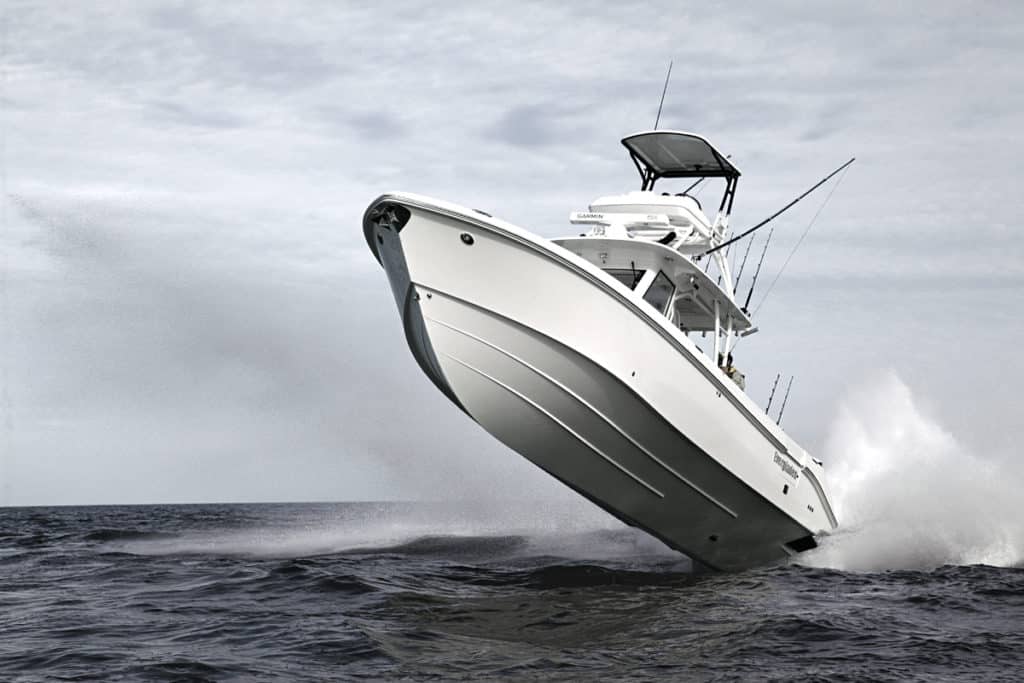
Steep, capping waves and dark holes jarred our brains, compressed our spines and knocked the wind from our chests in half-pronounced expletives as we crossed the howling passage between Catalina Island and the California mainland on a bad afternoon. Every part of every crew member ached.
As the captain, my strategy consisted of slowing down and slogging it out. That was as smooth as I could make it. Or was it? Could the ride have been more comfortable? Maybe.
Over the years, various systems and products — from simple to complex — have emerged to ease the impact when the going gets rough and help avoid injuries.
One of the most remarkable products consisted of a suspended deck. In 2005, Boston Whaler introduced the Active Deck Suspension System (ADSS) on its 320 Outrage Cuddy Cabin. The innovative, albeit short-lived, $20,000 option employed adjustable pneumatic shock absorbers under a hinged deck, allowing the sole to compress a few inches and reducing the impact of hard landings by as much as 40 percent, according to Whaler.
The patented ADSS worked fairly well and remained on the optional equipment list for a few years, but it was eventually dropped, likely because the cost of the complicated upgrade proved a tad too steep for potential buyers, especially once the Great Recession scuttled the economy. Thankfully, there are other ways to reduce the impact rough seas have on your body.
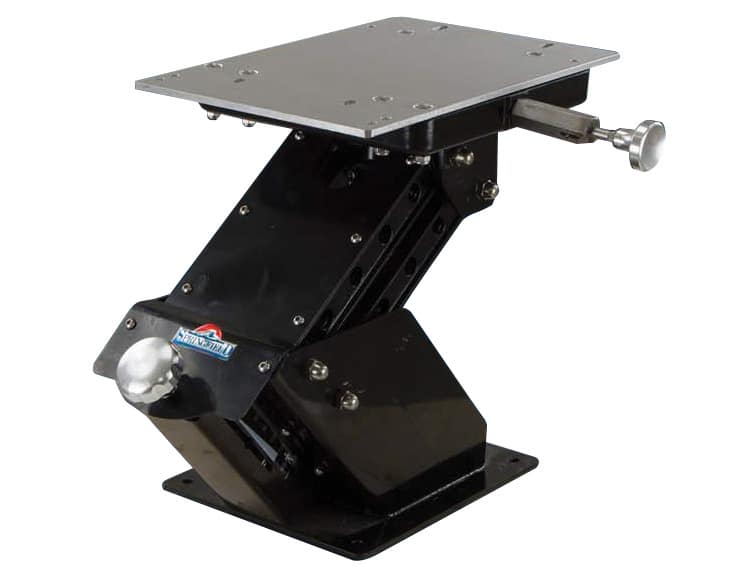
Cost of Comfort
Products that offer greater seating comfort in punishing seas have been available for years. Take Stidd Systems’ shock-mitigating seats, for example. The Stidd model 500N-V5 offers 4 inches of shock-absorbing travel, thanks to a nitrogen diaphragm shock inside the pedestal. It works so well, it’s used aboard U.S. Coast Guard boats. At more than $6,000, it is one of Stidd’s least expensive shock-mitigation seats.
Shock-absorbing marine seating systems from companies such as Cleemann, Grammer, Shockwave, Stidd and Ullman don’t come cheap, and many have footprints so large, they won’t fit on most recreational boats less than 30 feet in length — ironically, the very boats that need shock-absorbing seats the most.
In recent years, however, the cost of comfort has dropped. Whether you like to stand up or sit down, a number of affordable products can help smooth out the thumps and bumps of rough seas.
Companies such as Seaspension and Springfield now offer shock-mitigating marine seating systems that are far more affordable and fit well on just about any boat.
Springfield’s Shocker Pedestal, for instance, incorporates a mechanical spring and an adjustable hydraulic shock absorber inside an articulating base to dampen impact. The aluminum and stainless steel seat pedestal sits 161/3 inches high and offers 4 inches of travel to cushion your tush. It sells for about $1,300.
If that price is too high, Springfield also has a 2-inch-diameter, anodized aluminum EZ-Ride Pedestal that sits 12 inches high and offers 31/2 inches of shock-absorbing travel. It sells for around $240.
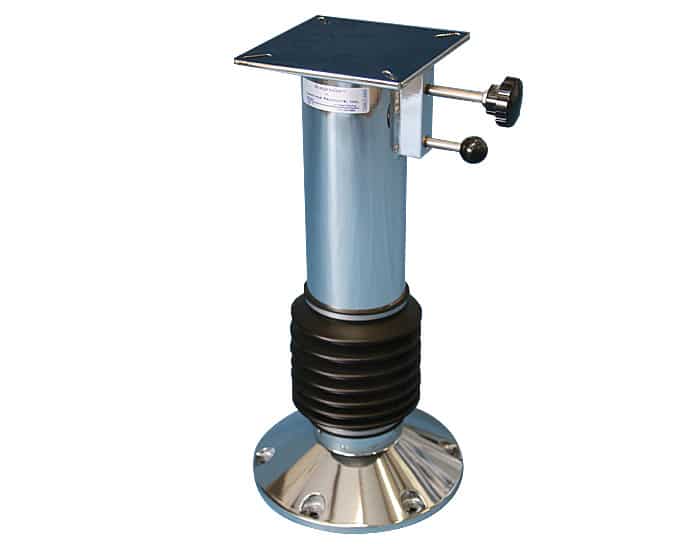
Sweet Seats
The Seaspension shock-mitigating seat pedestal system uses an engineered dampening system, consisting of stainless-steel springs and a shock absorber with velocity-sensitive internal valves for optimum dampening.
Available in heights ranging from 11 to 29 inches, the 6061 T-6 aluminum pedestal tube allows for 3½ inches of travel, says Peter Burer, the inventor and president of Seaspension, which is distributed exclusively in the United States by Taco Marine.
Unlike the Springfield pedestals, the sliding portion of the 4-inch-diameter Seaspension pedestal is protected from water and corrosion by rubberized bellows. Delrin bearings help ensure smooth operation.
You can use a Seaspension pedestal in single, double or tripod configurations, depending on the size and shape of the seating surface. A bucket seat would use a single pedestal, while a leaning-post-style helm seat would use two Seaspension pedestals. Tripod configurations are designed for heavy-duty commercial and military applications.
A 25-inch-high Seaspension pedestal retails for about $750. Yet how well does it work in smoothing out jolts and pounding? To find out, we compared the system using a boat equipped with a Seaspension pedestal to starboard and a conventional seat pedestal to port. To learn the results, turn to page 77.
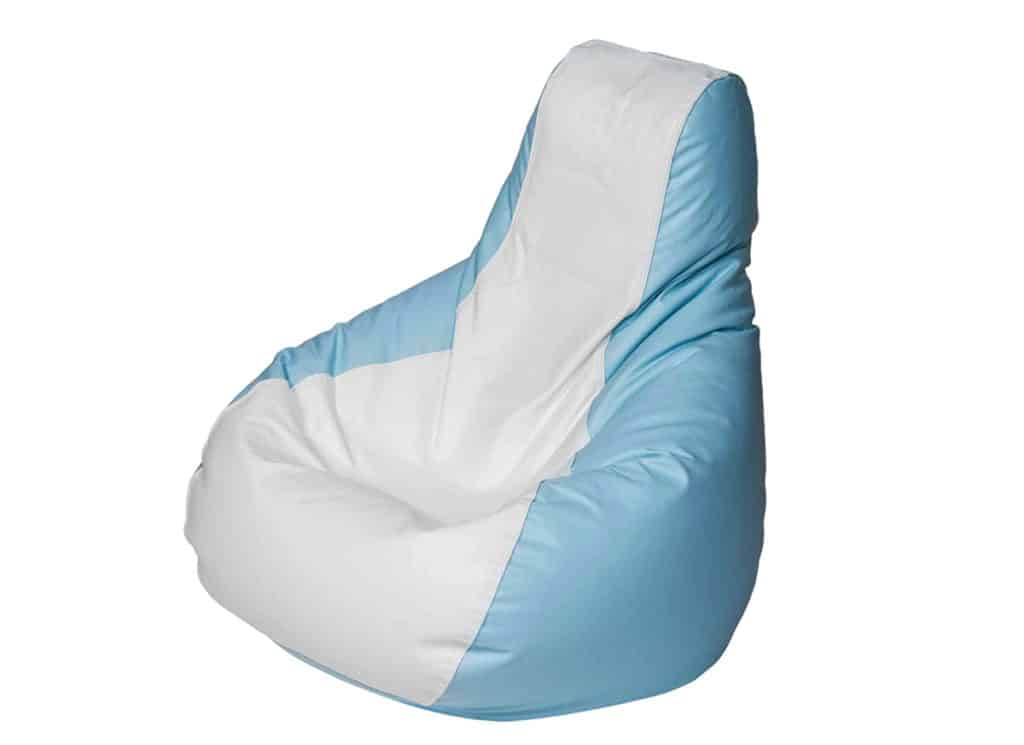
Beanbag It
Shock-absorbing seats at the helm are great for the captain and co-pilot, but what about the rest of the crew? How can you soften the ride for them?
One of the simplest ways to alleviate suffering is a beanbag seat. Beanbags were popularized by anglers participating in the Southern Kingfish Association (SKA) tournaments where high-powered center-console boats might run more than 100 miles in rough seas at speeds of 40 to 60 mph.
Crews needed a way to survive the beatings, and beanbags proved effective and cheap. Typically, the bags are braced against the transom (where the ride is smoothest) with crew facing forward, but you can also wedge the bag between the gunwale and console and face aft, which some crew members do to hide from the wet side of the boat.
Beanbag use has grown beyond the ranks of the SKA, and today there are at least two companies — E-SeaRider and Ocean Wave — that offer beanbags designed specifically for marine applications.
Our seat-of-the-pants experience leaves little doubt as to the cushioning effects of beanbags. With E-SeaRider seats, for instance, waterproof Styrofoam pellets conform to your backside to serve as myriad shock absorbers.
Marine beanbags differ from run-of-the-mill bags in a number of ways. They feature UV- and abrasion-resistant vinyl, mildew- and rot-resistant stitching, and special web straps and loops to secure the seat on a hardtop or elsewhere when not in use. A basic round marine beanbag starts at about $100.
“When I first came out with marine beanbags, a lot of boatbuilders just laughed at me,” says Pat Bennett, owner of E-SeaRider. “Now boat companies come to me to create customized marine beanbags with their brand names on them.”
Marine beanbags have evolved beyond the basic sphere to shapes like teardrops, high-back and armchair bags, and wedges that occupy a smaller footprint. There are even beanbag ottomans to prop up your legs.
“Beanbags will wrap around any surface, so you use them just about anywhere on the boat,” Bennett says. “The portability factor means you can sit wherever you want, even if you want to use it ashore.” You can also stuff a beanbag in a cabin or console to get it out of the way when you don’t need it.
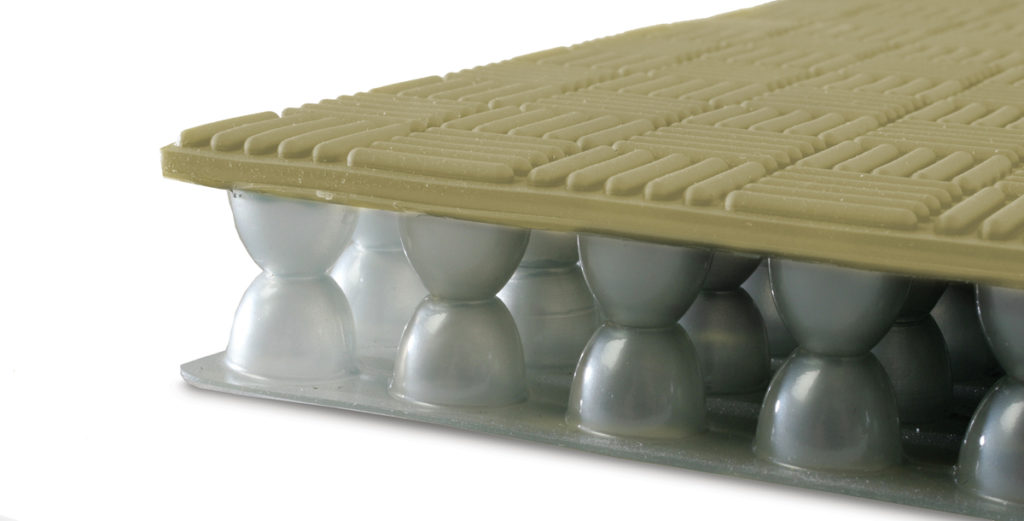
Stack the Deck
While Boston Whaler’s ADSS might not have been a commercial success, the idea of creating a shock-absorbing deck is far from dead. Companies such as SeaDek and Skydex offer shock-absorbing nonskid soles that are a lot simpler and less expensive than the ADSS.
Skydex’s shock-mitigating decks are installed in more than 6,000 boats, according to the company’s literature, and they reduce peak G-forces by as much as 90 percent. Skydex was designed for the U.S. military to reduce the injuries of Navy Seals while traversing rough seas in high-speed, rigid-hull inflatable boats.
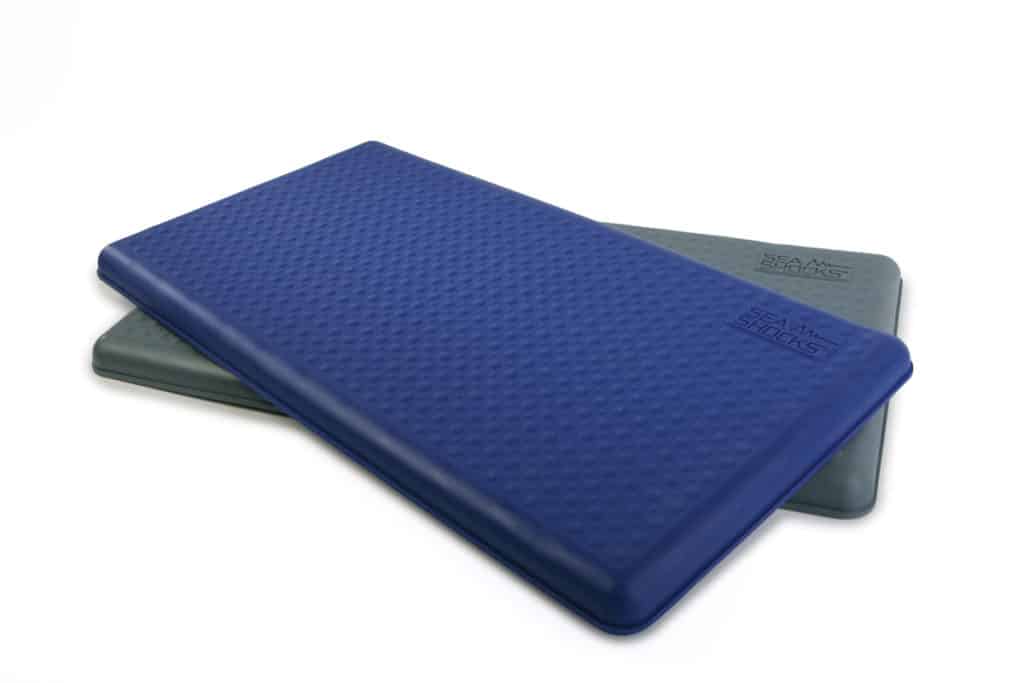
It features a network of hourglass-shaped air cells sandwiched between a base mat and nonskid surface. The cells compress under sudden pressure to absorb shock to help protect your knees and back. The result is a higher level of comfort when standing in rough seas. The suspended nature of the Skydex matting also helps isolate occupants from engine and boat vibrations.
SeaDek made its name with custom-made, closed-cell EVA foam nonskid that cushions your feet, legs and back. Now SeaDek has expanded its offerings with the Dual Density Helm Station Pad for even more impact protection.
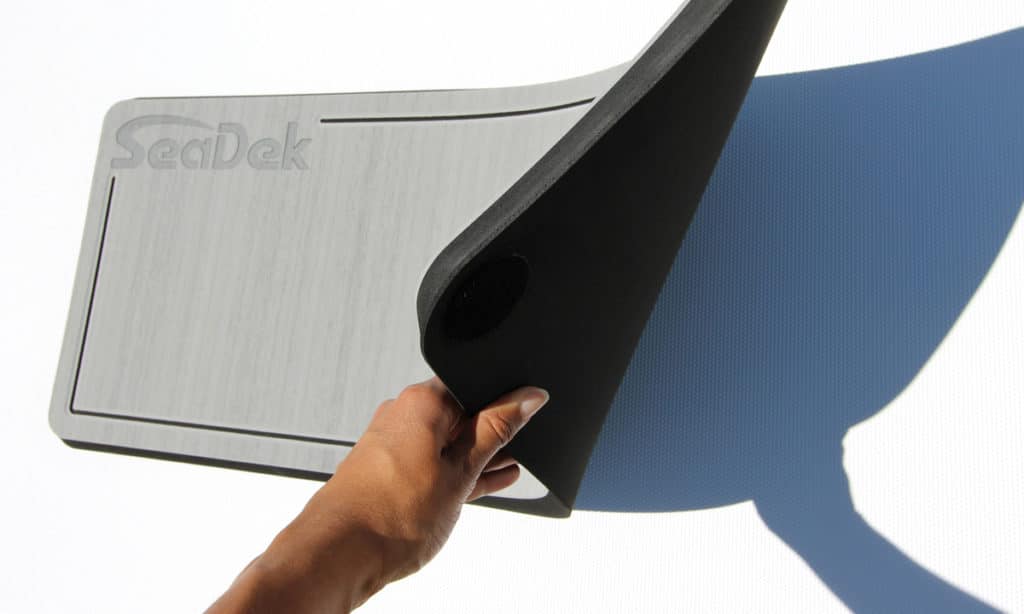
An 18 mm low-density foam bottom (shown above) absorbs shock while a 3 mm medium-density top layer with a brushed texture (seen below) provides traction, whether wet or dry. Thanks to six heavy-duty hook-and-loop (aka Velcro) fasteners, the helm pad can be easily removed in order to access hatches, or even to transfer the pad to another vessel.
Testing by SeaDek indicates that the Dual Density helm mat is 50 percent softer than SeaDek’s original single-density helm pad and requires 60 percent less force to compress, which translates to a more comfortable sole and greater shock mitigation. Offered in five popular color combinations, SeaDek’s Dual Density Helm Station Pad retails for $119.95.
Ultimately, there are a number of ways to soften the ride for you and your crew beyond just slowing down and slogging it out; however, you need to think ahead and equip your boat with the latest in shock-mitigating products and systems. Your crew will thank you, and so will your back.
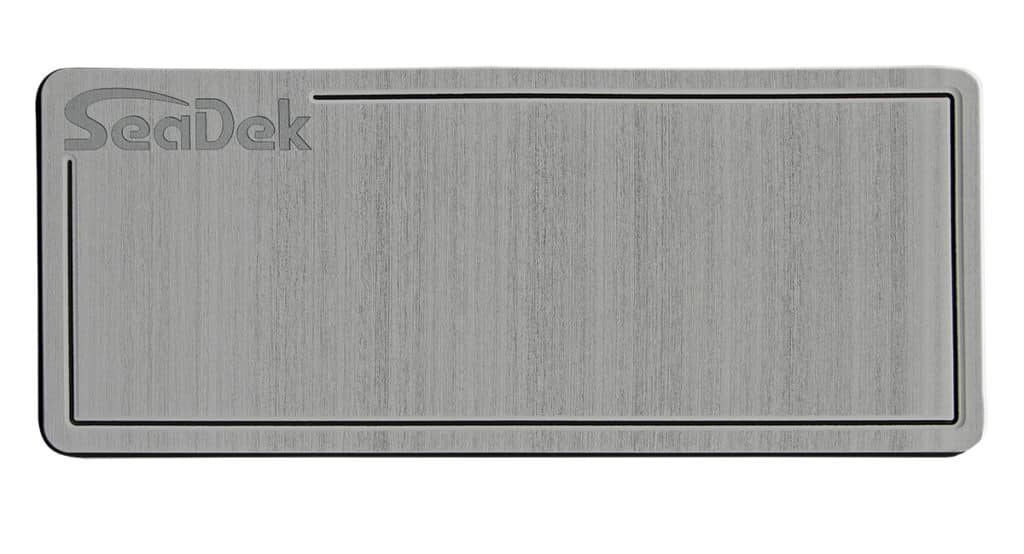
Shock and Aah
There’s a line from one of the all-time greatest guy movies, The Godfather, in which the aging Don Vito Corleone character says offhandedly to his grown son, Michael, “I like to drink wine more than I used to. Anyway, I’m drinkin’ more.”
To paraphrase Don Vito, when it comes to boating, I like to sit down more than I used to. Age catches up with us all, and, as a result, many of us don’t stand at the helm as much as we did when our backs and legs were younger and more resilient. Yet some helm seats are not a lot more comfortable than standing while running in rough seas.
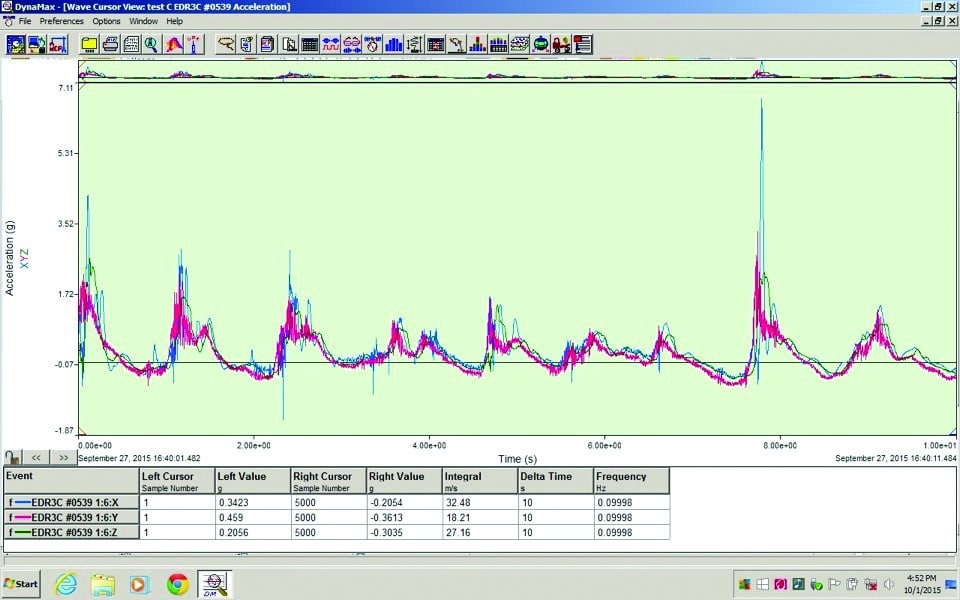
Seaspension has not only recognized this, but it has also developed a relatively affordable shock-mitigating seating system that pampers us middle-aged guys and might save the backs of younger skippers.
Shock-mitigating helm seats are not new. Stidd Systems, for example, has been around for years, but its shock-mitigating helm seats are designed for yachts and military applications, and prices start at around $6,000.
By comparison, the Seaspension seating system, which is distributed exclusively in the United States by Taco Marine, costs far less. One of its 25-inch-tall M30 pedestals retails for about $750. The pedestals are designed with footprints to replace a standard recreational marine pedestal seat. The question is: How well do they work?
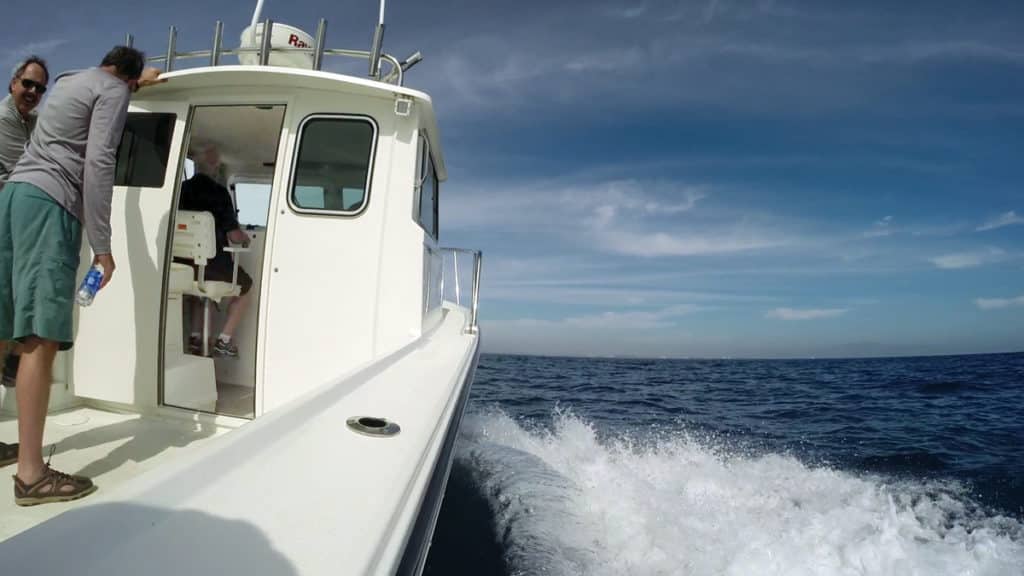
To find out, we ventured into the notorious Santa Barbara Channel aboard a Parker 2520 Pilothouse boat equipped with both a Seaspension M30 pedestal (at the helm) and a conventional Garelick pedestal (for the portside passenger). The seats were both Garelick 251 helm chairs with armrests.
With the help of Taco Marine’s Mike Kushner, Seaspension inventor and president Peter Burer, and Eric Hermann of Executive Yachts (who loaned us the boat), we were able to experience and gather data using a sophisticated IST EDR-3 triaxial accelerometer with three sensors — one each placed on the deck amidships, on the passenger in the portside conventional pedestal seat, and on the helmsman seated in the Seaspension-equipped seat.
Our goal was to measure the G-force of each, comparing data from sensors on the deck and conventional seating to the Seaspension seating. Unfortunately, the infamous Santa Barbara Channel was pretty docile on the afternoon of our sea trial — great for boating, but bad for testing a shock-mitigating seat. We were, however, able to find some gnarly wakes from passing ships and oil boats, and we pressed hard on the throttle as we crested the man-made rollers.
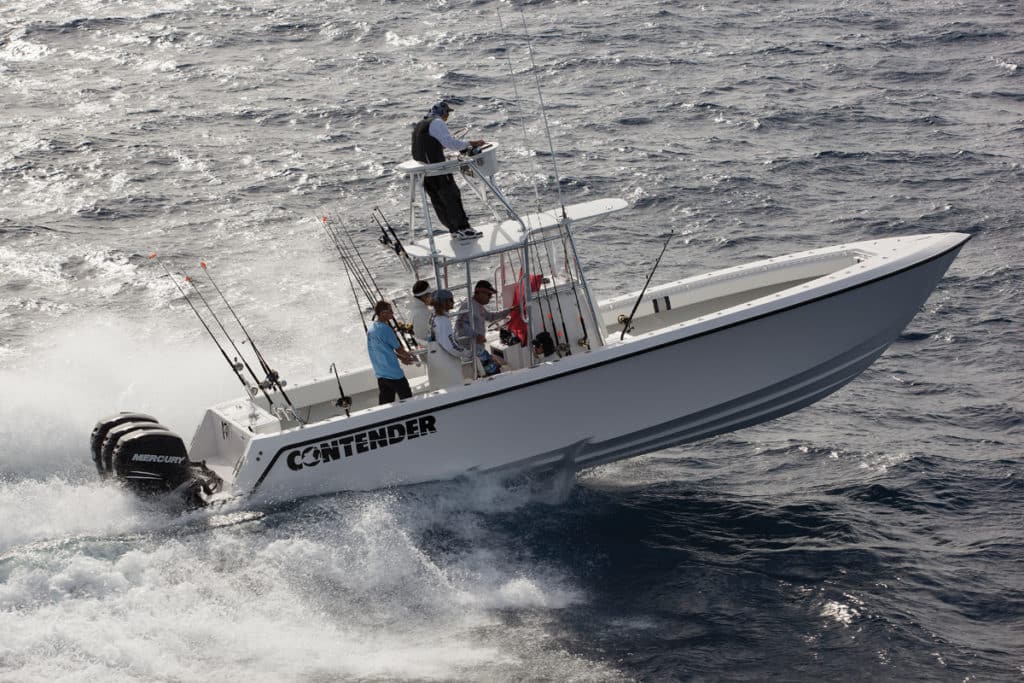
We learned that the Seaspension seating reduced G-forces by 60 percent compared to the conventional seat (see the IST readout above). “The harder the landings, the more of a difference the Seaspension will make in G-force reduction,” Burer says.
The Seaspension-equipped helm seat was clearly more comfortable than the conventional seat. “As someone who developed back problems as a result of boating, I would not go out on a boat without Seaspension,” says Hermann.
Unlike Don Corleone, I don’t like to drink wine more than I used to. But I do like to sit down while underway, and with the comfort afforded by the Seaspension system, I will be sitting a lot more.









